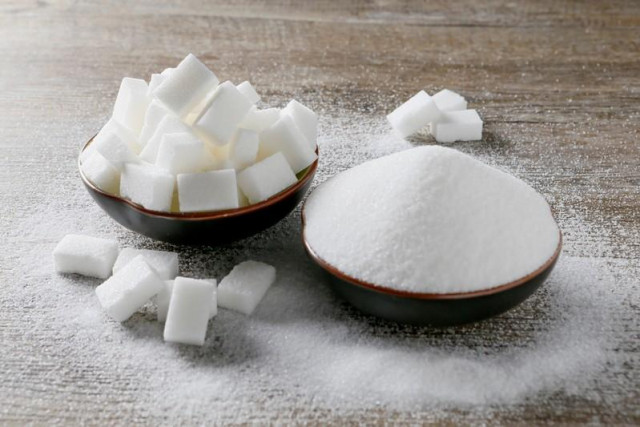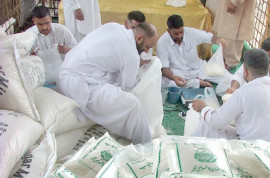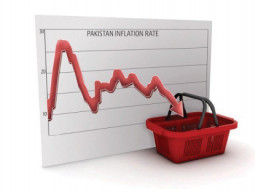
The report shows the power and influence of sugar barons in relation to the country’s policy-making. Most of the names mentioned in the report are close associates of the PM, the PTI and the minsters in the government.
PM Imran deserves much credit for the release of the report. He has promised to take decisive action after the probe commission submits its final recommendations.
Findings of the report raise crucial questions about the government’s sugar policy and the transparency of its economic policy. How does the sugar policy work? How sugar subsidy benefits only the sugar industry?
Sugarcane is a high-value, rich farmer’s crop due its special characteristics. Its per-acre expenses are much higher than any other cash crop.
The time from planting to harvesting is longer. Its marketing chain, from buying seed to arranging tractor trollies for transporting it to sugar mills, negotiating price and finally getting payment, involves very lengthy processes. This favours the rich and better-off farmers as against the cash-starved small landowners.
Pakistan is among the top 10 sugarcane producing countries in the world, with plantations over a million hectares. Sugarcane production accounts for nearly two-thirds of the area in Punjab and a quarter in Sindh.
It uses more of the subsidised agricultural inputs, especially fertiliser and water, than any other crop in the economy. In a highly water-stressed country like Pakistan, sugarcane uses a much higher quantity of water than any other crop.
Between 2013-14 and 2017-18, according to the Economic Survey of Pakistan, the production of sugarcane increased by an impressive 24%, from 67 to 83 million tonnes.
During this period, the area where sugarcane was cultivated increased by 14% from 1.17 to 1.34 million hectares. The average yield per hectare, rising from 57 to 62 tonnes, shows an increase of only 8%.
The area under sugarcane cultivation in Pakistan is the fifth largest in the world after Brazil, India, China and Thailand. Its per-hectare yield, however, is much lower than the other major producers.
Its yield of 62 tonnes per hectare in 2018 was well below the world average of 73 tonnes and even below India’s yield of 80 tonnes.
Figures for last year’s crop (2018-19), compared with the average performance of crops in the previous five years, showed a decline of 9% in sugarcane cultivation and 6% in production. This decline is mainly attributed to late payments to farmers, shortage of water and an uncertain political environment during the 2018 election.
As in production, Pakistan is among the top 10 countries in consumption of sugar in the world and the biggest consumer of sugar in South Asia. Consumption of sugar is over 25 kg per person per year in Pakistan. In India, it is 20 kg and in China 11 kg.
Growth of sugar mills
Pakistan has 89 sugar mills, a much higher number than needed for domestic requirement. Some of these are located in regions where they are economically unviable and environmentally unsuitable.
Most of these mills are owned by very influential and powerful families. They belong to the governing party, the main opposition parties and the families of former generals.
At the time of Independence in 1947, there were only two sugar mills in the country. Until 1970, there were only four.
The mushroom growth of the mills was mainly during General Zia’s period of office (1977-1988), when state patronage was provided to create a new business and political class to counter political opposition to his dictatorial rule. Since then, all the major political parties have followed this path and expanded it.
This growth of the sugar industry has had a very adverse effect on the country’s other climatically suitable cash crop, cotton, which has been the backbone of the agriculture sector and a major source of foreign currency reserves for the country.
Between 2013-14 and 2017-18, the area under cotton cultivation declined by 4% and its production by 6%. More strikingly, when 2018-19 is compared with the average performance of the crop in the previous five years, its cultivation area has declined by 17% and production fell by two million bales or 20%.
Public subsidies
The pricing policy for sugarcane and sugar is based on government intervention in the market through huge public subsidies, direct and indirect, at various levels of production and sale of the commodity.
At the time of harvesting the crop, the government announces a guaranteed minimum price for sugarcane, to encourage farmers to increase the area under cultivation. The government even decides about the movement of the crop – to ensure that sugar mill owners receive plenty of the produce to keep their business viable.
To protect the sugar industry further, the government imposes higher tariffs on sugar imports to “stabilise” prices in the domestic market. In general, the domestic price for sugar remains much higher than the average world price.
In addition, the government provides an export subsidy on sugar in the name of increasing foreign currency reserves.
The government’s decision in September 2018 to allow export of sugar, despite early indications of low production in the country, was a continuation of past public policy to protect the industry.
Pakistan exported 0.4 million tonnes of sugar in 2016-17 and 1.6 million tonnes in 2017-18. Moreover, in 2017, during the period of Pakistan Muslim League-Nawaz (PML-N) government, the sugar export quota was increased from 0.5 to 2 million tonnes.
There are two prices for refined sugar in the domestic market. One is the ex-mill price, which is the wholesale price at which the mill sells its product to traders and shopkeepers. The other is the retail price of sugar sold to customers at local corner shops and supermarkets – the price paid by common consumers.
The decision to export the commodity caused a hike in both these prices. The ex-mill price increased from Rs52 to Rs54 per kg in January 2019. The retail price, however, increased from Rs56 to Rs59, a rise of 6%.
With the increasing exports, prices increased regularly for domestic consumers. Even after the ban on sugar exports in February, prices remain on the higher side.
Between December 2019 and March 2020, the ex-mill price for sugar increased by 39% to Rs72. In the same period, the retail price increased by 33% to Rs80.
The United States Department of Agriculture (USDA)’s April 2020 report also mentions that wholesale prices for sugar in Pakistan were over 50% higher in March than the international prices.
The sugar industry has benefitted enormously from the government’s policy. In addition to the export subsidy of Rs3 billion by the Punjab government, the sugar mill owners have received extra profit to the extent of Rs85 billion – Rs5.7 billion per month from January 2019 to the end of March 2020.
The above discussion demonstrates that the government’s sugar policy distorts the local market. This harms poor the most and inflicts huge costs on the domestic economy. The only beneficiary is the influential and powerful sugar industry.
At the time of pandemic and huge risks to economy, the government should refrain from intervening in the sugar market and consider reforms in the industry through parliamentary procedures and democratic practices.
In this hour of economic crisis, the government should focus more on the protection of poor and welfare of society through the provision of public goods like healthcare and strengthen the social safety nets.
The writer is a PhD from the UK and writes for The Guardian as well
Published in The Express Tribune, May 11th, 2020.
Like Business on Facebook, follow @TribuneBiz on Twitter to stay informed and join in the conversation.

















COMMENTS
Comments are moderated and generally will be posted if they are on-topic and not abusive.
For more information, please see our Comments FAQ